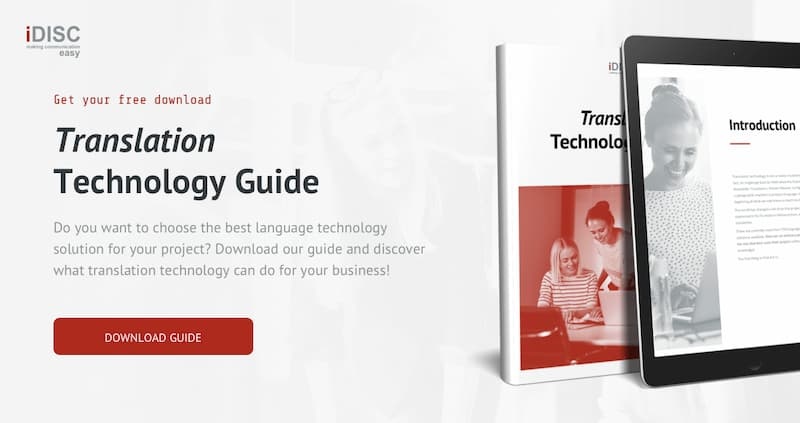Right now, the word “ChatGPT” is trending on Twitter, Linkedin and most social networks.
It seems that AI is using more and more refined mechanisms and its potential uses are becoming almost infinite.
How far does AI go today? What can and can’t it do?
For obvious reasons, the following question comes to mind: can we translate using ChatGPT?
As one of the most advanced natural language generation tools, it is not unreasonable to think that it can also provide efficient translations.
But what exactly is it? What else does this new tool bring? What are the advantages and disadvantages of translating using ChatGPT? Is it really advisable?
Let's go one step at a time.
What is ChatGPT?
ChatGPT is an AI-based language model developed by OpenAI that was launched in November 2022. Its smart engine has been trained with a large amount of linguistic data to be able to answer questions, generate text and perform other tasks in a wide variety of languages using a natural language interface.
For example, we can ask it to “tell me the importance of a digital marketing strategy”, or more simple things, such recommending a 200-calorie breakfast recipe. However, it should be noted that its engine only draws on information that exists online to give us these answers. The question then becomes, does this machine have sufficient criteria to help us with issues such as translation?
How can ChatGPT help you?
The truth is that ChatGPT can help us with tons of things such as:
- Generating text: it can generate coherent and relevant text on the basis of an input question or command.
- Correcting grammar: it can help correct grammatical errors in your text. This is useful for proofreading documents and texts.
- Writing text: it can help write texts, suggesting words and phrases suitable for a specific context.
- Analyzing text: it can analyze a text, and tell whether the tone is positive, negative or neutral. This is useful for monitoring opinions on social networks or on the web in general.
- Machine translation: it can automatically translate text from one language to another.
This tool is definitely very good at performing these tasks carefully and consistently. It brings a host of advantages, but also certain disadvantages.
Let's go point by point.
Advantages of translating using ChatGPT
- Speed: ChatGPT translations are usually produced in a matter of seconds.
- Cost savings: ChatGPT machine translations, as with Google Translate, are free of charge.
- Consistency: ChatGPT translations are consistent in terms of vocabulary and style.
- Availability: you can translate with ChatGPT 24 hours a day, 7 days a week.
- Adaptability: ChatGPT can be trained in several languages and can therefore be adapted to the needs of different users and situations.
Disadvantages of ChatGPT translations
- Varying quality: although ChatGPT is a highly advanced AI model, the quality of its translations varies depending on the language, context and complexity of the text. If there is one obvious thing that AI cannot currently replicate, it is the sensitivity and emotional intelligence of human translators.
- Lack of cultural and linguistic nuances: machine translations still struggle to capture the cultural and linguistic nuances of a specific language or social reality, which can lead to inaccurate translations, cultural misunderstandings or politically incorrect texts.
- Language limitations: ChatGPT can be trained in several languages, but the available language pairs are still limited. This may lead to less accurate translations or it being impossible to translate certain languages.
- Struggles with technical and specialized texts: if vocabulary is very subject specific or not in the common domain, ChatGPT does not find sufficient data in certain languages. Technical translations in specific sectors require the use of highly specialized terminology and knowledge of the subject matter.
- Lack of context: machine translations do not always identify context correctly. For example, a machine translation of an ambiguous sentence may convey the wrong meaning for that context.
Impact of AI on translations worldwide
ChatGPT is already having a significant impact on translations worldwide and this impact is likely to continue in the future.
These developments are especially important in the world of business marketing, where communication with audiences needs to be fast and in different languages for different target markets.
However, it is important to keep in mind that machine translations still have limitations, such as those mentioned above.
For example, a question you might be asking yourself right now: is using ChatGPT to translate your marketing communications actually effective?
How accurate are ChatGPT translations?
As mentioned above, ChatGPT translations are very accurate for general texts, but not for highly technical or industry and subject-specific texts.
When it comes to implementing a multi-language marketing strategy, getting the cultural and linguistic nuances of a particular language right is key in order to establish good communication with your target audience. Proofreading machine translations is always a must and, if necessary, this also includes making adjustments or corrections. People are still needed today in this area.
It’s true: ChatGPT has proven to be very effective in several tasks related to natural language processing, and AI and translation technologies will never be the same again. However, for now, some caution is advisable, because it is still not as reliable as machine translation or neural machine translation engines for specialized areas and in multiple language pairs. In time.
At iDISC, in terms of AI, we are committed to machine translation plus human proofreading, working to meet the needs of each project.
If you found this article useful, we also recommend that you read “Can machine translation replace human translation?”
The team at iDISC, a professional translation agency, is here for you. We are website translation and localization experts and would be delighted to help you.
Don’t forget that you can find tons of other interesting content on our blog.





